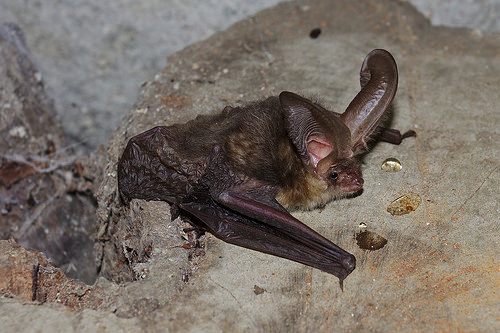Vampire bats are the closest real thing to vampires.
- Vampire bats are a subfamily of three species of bats native to Central and South America, and Mexico in North America.
- The scientific name of a vampire bat is Desmodontinae, from the family Phyllostomidae, the family of New World leaf-nosed bats, and the fur of the bat generally ranges from brown, black to grey in colour.
- The diet of vampire bats consists only of blood, from either mammals or birds, depending on the species, and the bat needs to consume it at least every two days so that it does not starve to death.
- Vampire bats grow to be 7 to 9.5 centimetres (2.7 to 3.7 inches) in height; have wings that spread 15 to 18 centimetres (5.9 to 7 inches); and the weight ranges from 19 to 57 grams (0.7 to 2 ounces).
- On the end of their nose, vampire bats have receptors that can interpret infrared, that are used to find heated areas on a mammal’s body, which are normally areas that contain blood close to the surface.
Vampire Bat
Image courtesy of stanzer/Flickc
- Colonies of vampire bats, numbering around 100 or as many as a thousand, live together, and they care for each other, even to the point of vomiting up blood to keep a fellow bat alive, or looking after orphaned young.
- A female vampire bat has a single baby at a time, that drinks its mother’s milk until it is approximately three months of age; and the bats typically live to be 8 to 12 years of age.
- A vampire bat typically feeds by itself, generally landing nearby its usually sleeping prey, scrambling onto it with its arms and legs, and biting the animal to make a wound, which is usually not felt by the host and does not clot due to chemicals in the bat’s saliva.
- Vampire bats spend roughly 20 to 30 minutes feeding off a single wound at a time, and they do not directly cause fatalities to their prey, although diseases and bacteria may be transferred
 .
. - Despite being classified as least concern, vampire bats are reducing in numbers due to loss of habitat and poisoning by humans, especially farmers, to protect their livestock.
Bibliography:
Common Vampire Bat, 2015, National Geographic, http://animals.nationalgeographic.com.au/animals/mammals/common-vampire-bat/
Vampire Bat, 2013, A-Z Animals, http://a-z-animals.com/animals/vampire-bat/
Vampire Bat, 2015, Wikipedia, http://en.wikipedia.org/wiki/Vampire_bat







